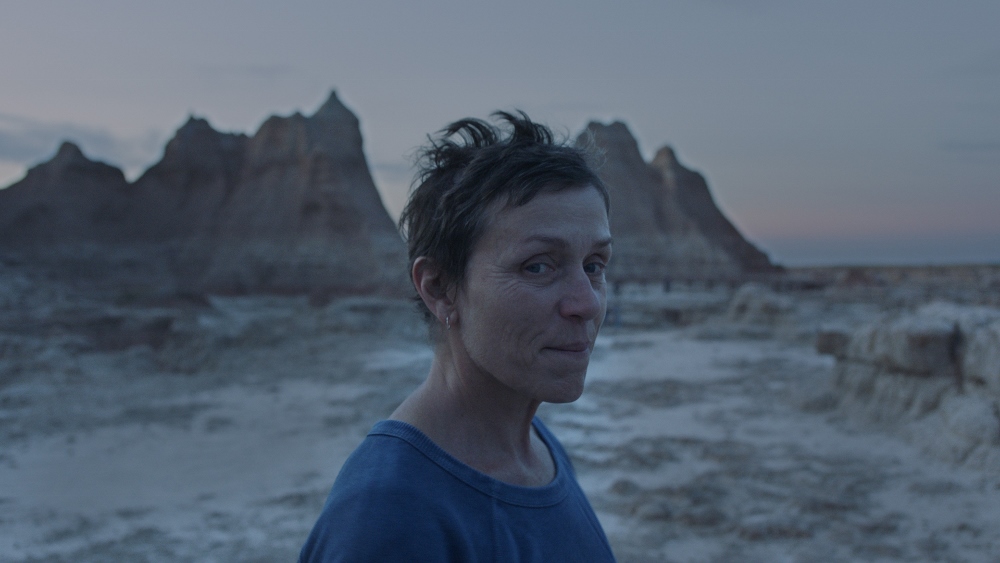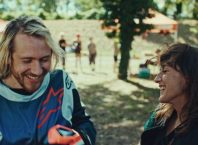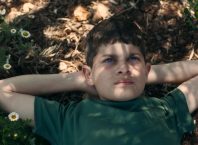
Starkly poetic, Chloé Zhao’s Nomadland tells a story that is closer to life than to fiction, in its wandering outside the lines of a traditional narrative arc. Inspired by Jessica Bruder’s 2017 nonfiction book Nomadland: Surviving America in the 21st Century, the film refers to the very real problem confronting older Americans today: unable to live on their benefits, they scramble to make a living and keep a roof, any kind of roof, over their heads. Yet what I find fascinating is something deep in the structure of the film, the way that Zhao has chosen to work with this material, with a close focus on one woman, Fern, magnificently portrayed by Frances McDormand.
Fern is a fictional character, yet the circumstances of her life correspond to true events in the United States. Fern and her husband Beau lived in Empire, a company town in Nevada, built around the United States Gypsum Company. Gypsum is a mineral that has many uses, including the making of sheetrock. When the construction business crashed, the company shut down the mine, and the town along with it. As the film opens, Fern, whose husband had recently died, had just lost her job and house in one fell blow, just as the real-life inhabitants of Empire did in 2011. It’s where the film goes from here that makes this a different kind of story. There are many familiar story arcs that might have taken off from this point: Fern struggles and suffers but learns self-reliance and discovers her inner strength and finds a new man/satisfying new career – happy end! Or, Fern struggles and suffers and makes bad choices then hits rock bottom to illustrate the ultimate weakness of human nature, the ugliness of life, and the consequences of bad choices. That is not where Zhao, who wrote the screenplay, takes this film. The struggles and suffering are there, but Zhao neither glorifies nor judges Fern and her choices.
Fern takes on seasonal work as part of Amazon’s CamperForce, living in her van, which she has named Vanguard. As Bruder’s book, and the film, show, this is a way of life that has been adopted by members of the over-60 crowd who have lost their homes and jobs. Van dwelling allows them to move from one temporary job to another, while retaining their independence and freedom. Living in a van there’s not much wiggle room, and almost every aspect of daily life becomes a challenge. There is also a stigma attached to those who lack the various status symbols of contemporary life, of which permanent housing is one of the most significant. When Fern, who used to be an English teacher, meets up with a former student, the girl asks her: “My mom says that you’re homeless, is that true?” Fern stands her ground and responds “I’m not homeless, I’m just houseless. Not really the same thing, right?”
Yet this life is not without its beauty. Joshua James Richards’ cinematography, accompanied by Ludovico Einaudi’s haunting score, captures the vast solitude and wonder of the landscape, as Fern travels from job to job. When the members of this nomadic tribe gather around the campfire, and the camera moves in close, their stories are etched on their faces. Traveling solo from one temporary job to another, there is also a sense of community among these contemporary nomads. Social media plays a major role in fostering connections and as a resource for newcomers. Bob Wells, who plays himself in the film, is a mentor for vandwellers. In addition to running a website with information and guidelines, he founded the Rubber Tramp Rendezvous, an annual gathering of vandwellers, in Quartzsite, Arizona. Here, vandwellers can share survival strategies – like the 10 commandments of stealth parking, learn new skills, exchange merchandise, and enjoy each other’s company.
Although Fern is a fictional character, the film is imbued with a strong sense of authenticity, in part because Zhao worked with several non-actors, including Bob Wells, Linda May (a central figure in Bruder’s book), and Charlene Swankie. Although Linda and Charlene do not portray themselves in the film, the life experience and presence that they bring to the screen contributes to the sense that we are seeing life as it flows. Linda befriends Fern in the film, she is the one who tells her about the RTR, and urges her to come. Her warmth and friendliness are radiant. Strong and fiercely honest, Swankie is an impressive elder of the tribe, warning Fern: “You could die out here.” She has one scene in particular that is unforgettable, as blues eyes blazing, she reflects on life with wisdom and passion.
Frances McDormand is the heart of the film; her portrayal of Fern is so nuanced and textured. Striding swiftly down the aisles at the huge Amazon warehouse, she turns to smile a cheerful hello to Linda, yet in an instant, when she turns back, her features are all straight lines, serious and somber, her eyes reflecting a loss so deep it cannot be spoken. Fern struggles with the loss of her husband, and the life they shared. When she goes through her belongings, sorting out what is important enough to take with her in the van, she picks up a denim jacket, big and boxy, it looks like it must have belonged to Beau. She holds it close, almost breathing it in, kissing a memory. Yet she is also brave, resilient, friendly and funny. And she can quote Shakespearean sonnets by heart. McDormand is mesmerizing as Fern. Her performance is so grounded, it makes me think that although she’s an invented character, Fern might be out there somewhere, driving in her van. Maybe I’ll see her down the road.
Nomadland
USA/2020/1 hour 47 min/English with Hebrew subtitles
Director: Chloé Zhao; Based on the book by Jessica Bruder; Screenplay: Chloé Zhao; Music: Ludovico Einaudi; Editing: Chloé Zhao; Cinematography: Joshua James Richards; Cast: Frances McDormand, David Straithern, Linda May, Charlene Swankie, Bob Wells





